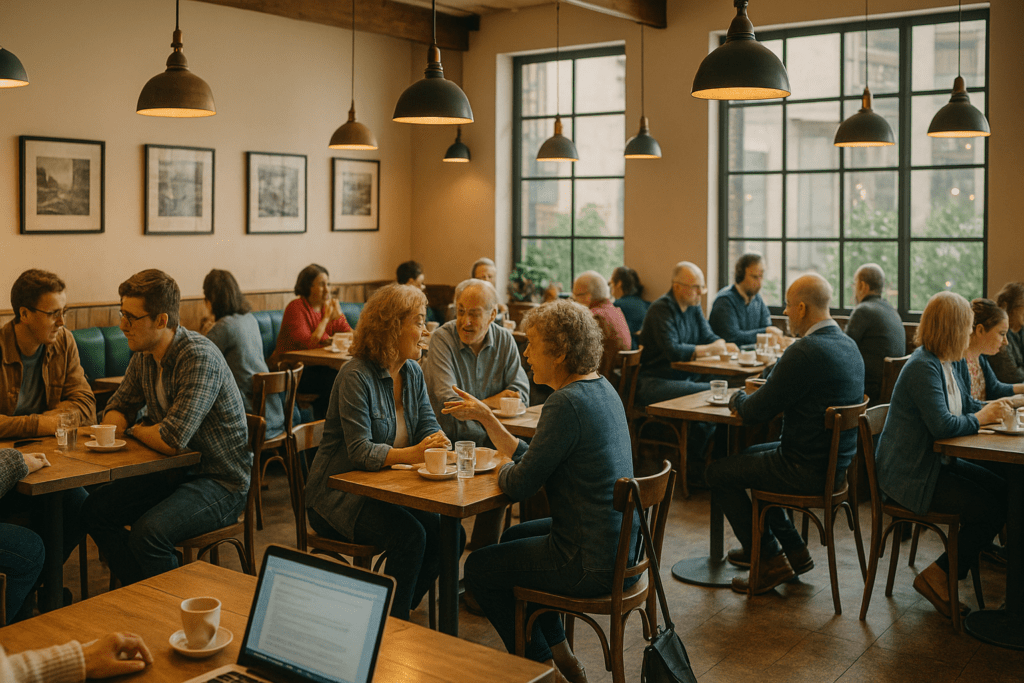The house and the office are the two main places that many people base their habits on these days. A growing trend highlights the importance of “third places.” These are unofficial spots where people gather, interact, and feel a sense of belonging. These areas are not bound by the privacy of home or the responsibilities of the workplace. Rather, they live on human engagement, openness, and accessibility. Physical third places are vital cultural anchors in our scattered lives. They offer a sense of community. Similarly, online casino in Canada create virtual spaces for fun and connection.
Comprehending Third Places
Sociologist Ray Oldenburg first proposed the idea of third places in his book The Great Good Place. He described them as casual spots where people can hang out. These include cafés, parks, taverns, barbershops, libraries, and community centers. Third places are fun, open, and free. They differ from the private and structured feel of home and work. According to Oldenburg, these environments are essential for creating a feeling of community. Conversation, humor, or even simple everyday routines like getting coffee from the same café every morning can help people bond. These areas help build relationships and bridge social divides. They give neighborhoods a lively sense of community.
Why People Are Paying More Attention to Third Places
Lifestyles have drastically changed in the last few decades. Daily chances for in-person engagement have dropped. This is due to remote work, online shopping, and digital entertainment. Nowadays, people spend less time interacting with their neighbors and more time in front of devices. Third places are now more valuable than ever because of the obvious gap this has created in social life. Many sociologists, urban planners, and civic leaders say today’s cities lack free spaces. These are places where people can relax and just “be” without spending much money. Neutral gathering places are growing in importance. As housing gets more privatized, work schedules often mix with personal time.
Benefits to the Social and Psychological
Third-place advantages extend well beyond leisure. Regular participants in these settings often say they feel better mentally. They also report less stress and stronger community bonds. Because they frequently welcome people from all backgrounds and income levels, these spaces foster diversity. They also promote civic involvement at the same time. A simple discussion in a bookshop or park can lead to grassroots activism, local projects, or even partnerships. Third places help build social capital. They create connections and trust, which let communities thrive.
Difficulties and Third Places’ Future
Third positions are facing increasing difficulties despite their importance. Chain stores and upscale buildings are taking over small, independent businesses. This shift is happening because real estate costs are going up. Access is restricted by the frequent privatization or stringent regulation of public areas. The openness that makes some urban neighborhoods attractive is hurt when people feel unsafe or face too much enforcement.
Maintaining and growing third places takes deliberate work. Cities can create mixed-use areas with housing, shops, and green spaces. They should invest in public infrastructure. Also, offering tax breaks or subsidies can help businesses that support the community. Communities can sustain independent spaces by using and supporting them. They should see these spaces as essential parts of social life, not just luxuries.
The need for local, community-focused gathering spots will grow as our world becomes more connected online. Third places hold communities together; they’re more than just places on a map. They provide happiness, conversation, and a sense of community. You can’t replicate this in a private home or an office. Third spaces, like cafes and parks, are more than a trend. They show a key shift in how we connect with each other. By fostering these areas, we are also fostering future communities that are healthier and more resilient.


